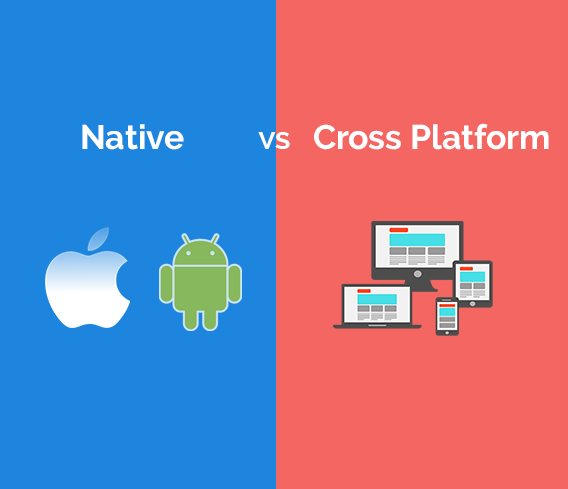Before you start creating a mobile application, you should think about choosing a technical approach to the process. Do you want native or cross platform app development? By native development, experts mean the use of original programming languages and mobile OS tools. With cross-platform development, specialized tools are taken into service, with which you can create applications that work in several mobile operating systems at once.

Which one to prefer?
There is no definite answer to this question because it depends on what your budget is and what you actually require. It all depends on the goals. If there is a goal to cover the maximum number of devices with minimal funds, focus on cross-platform development in the case of a focus on mobile solutions.
What are the main advantages and disadvantages of mobile native and cross-platform development? Native development itself is expensive because a company needs to invest in two teams – iOS and Android. For simple applications, the speed of development in Flutter / React Native is higher. But the plus is that the infrastructure has already been formed and understood. You get access to any device resources and can develop for smartwatches, cars, etc.
Cross-platform development is also a cool thing. The framework’s infrastructure is young, but the situation is gradually changing for the better. Such development makes it possible to write for several devices at once. Even if you write in Flutter, for example, it integrates easily with native code.
Any cross-platform library or framework is based on the same native mechanisms on which native development is directly implemented. It’s just that in the case of cross-platform solutions, workflows are built in such a way as to smooth the corners in terms of bringing the interface of the final solution to a certain common denominator.
As a rule, universalism is not always the answer to the task of creating a working mobile solution: the developer works the better, the deeper he understands the mechanisms of the device of various processes from the inside.
Good to remember
Any, even the most advanced universal platform lags behind in its capabilities from the native one: manufacturers of hardware and mobile operating systems often work together and constantly increase the capabilities of final solutions. The capabilities of mobile development platforms, especially cross-platform solutions, inevitably lag behind.
New items in the segment of mobile devices appear on the market all the time, some of them are significantly ahead of their time. Take Samsung and its development of a foldable-screen device: it is obvious that, due to a radically different frontend, existing development platforms are not ready for such things.
This is where deep knowledge of native platforms will help out: only a developer with deep, systemic knowledge of mobile development, that is, native platforms, can compensate for the natural lag behind hardware and OS. Only such a specialist will be able to increase the functionality of his solution for the latest mobile devices based on not very advanced development platforms available at the moment.
Cross-platform development is great for prototyping, quick testing of an idea, and so on. When it comes to creating truly fundamental products, a developer inevitably comes to the need to deeply study the basic elements of the process, that is, native development.
Let’s summarize:
Cross-platform is handy for writing a simple application that has few screens and many common elements across platforms. The ideal challenge for a cross-platform is developing a mobile game. For products with unique app interface and complex business logic, the native development method is more suitable. But, Native development is costlier than cross platform development too.
So, depending upon your requirements and suitability, you can go for one out of these two development practices.







Add Comment